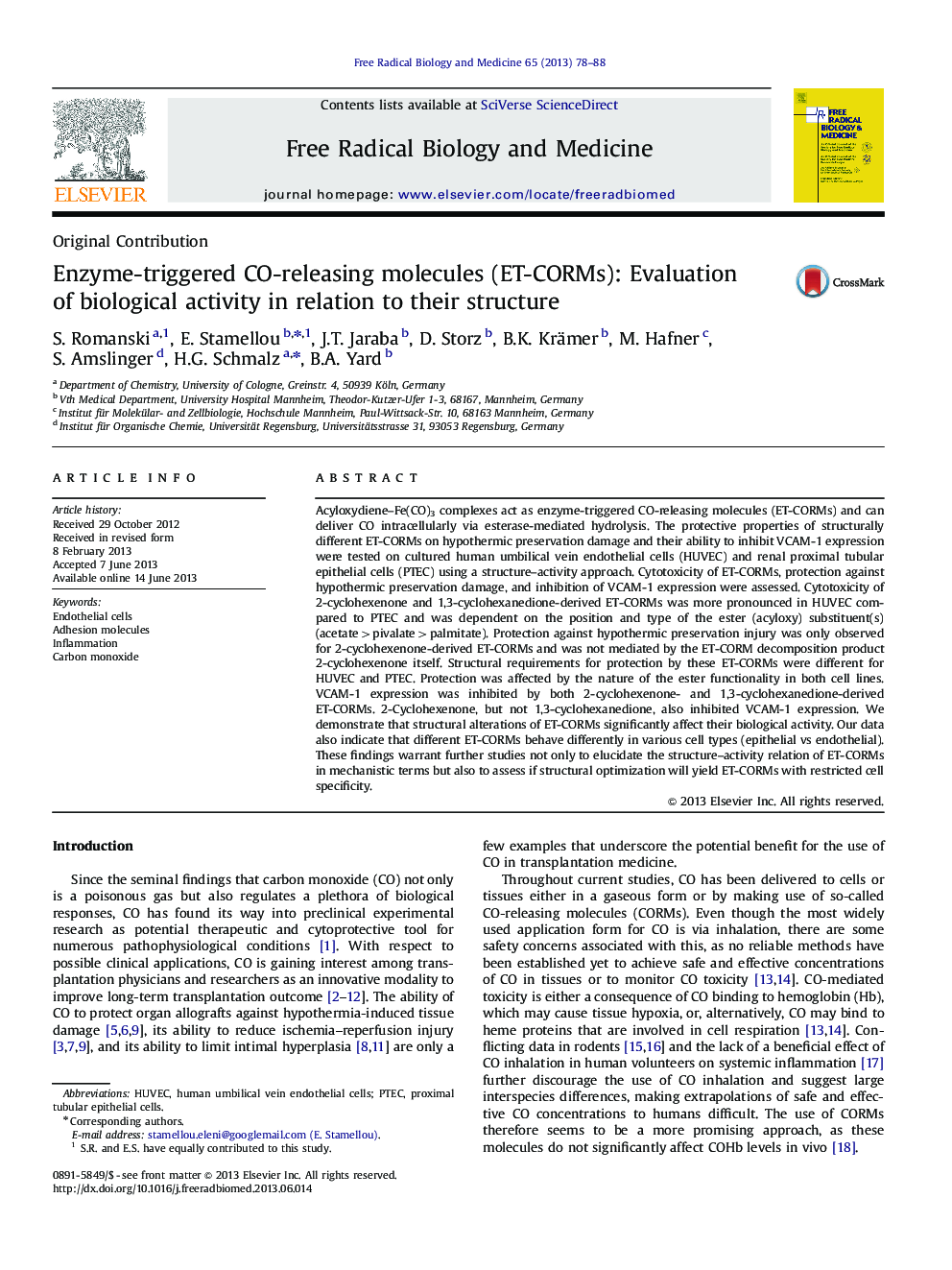| Article ID | Journal | Published Year | Pages | File Type |
|---|---|---|---|---|
| 8271119 | Free Radical Biology and Medicine | 2013 | 11 Pages |
Abstract
Acyloxydiene-Fe(CO)3 complexes act as enzyme-triggered CO-releasing molecules (ET-CORMs) and can deliver CO intracellularly via esterase-mediated hydrolysis. The protective properties of structurally different ET-CORMs on hypothermic preservation damage and their ability to inhibit VCAM-1 expression were tested on cultured human umbilical vein endothelial cells (HUVEC) and renal proximal tubular epithelial cells (PTEC) using a structure-activity approach. Cytotoxicity of ET-CORMs, protection against hypothermic preservation damage, and inhibition of VCAM-1 expression were assessed. Cytotoxicity of 2-cyclohexenone and 1,3-cyclohexanedione-derived ET-CORMs was more pronounced in HUVEC compared to PTEC and was dependent on the position and type of the ester (acyloxy) substituent(s) (acetate>pivalate>palmitate). Protection against hypothermic preservation injury was only observed for 2-cyclohexenone-derived ET-CORMs and was not mediated by the ET-CORM decomposition product 2-cyclohexenone itself. Structural requirements for protection by these ET-CORMs were different for HUVEC and PTEC. Protection was affected by the nature of the ester functionality in both cell lines. VCAM-1 expression was inhibited by both 2-cyclohexenone- and 1,3-cyclohexanedione-derived ET-CORMs. 2-Cyclohexenone, but not 1,3-cyclohexanedione, also inhibited VCAM-1 expression. We demonstrate that structural alterations of ET-CORMs significantly affect their biological activity. Our data also indicate that different ET-CORMs behave differently in various cell types (epithelial vs endothelial). These findings warrant further studies not only to elucidate the structure-activity relation of ET-CORMs in mechanistic terms but also to assess if structural optimization will yield ET-CORMs with restricted cell specificity.
Keywords
Related Topics
Life Sciences
Biochemistry, Genetics and Molecular Biology
Ageing
Authors
S. Romanski, E. Stamellou, J.T. Jaraba, D. Storz, B.K. Krämer, M. Hafner, S. Amslinger, H.G. Schmalz, B.A. Yard,
